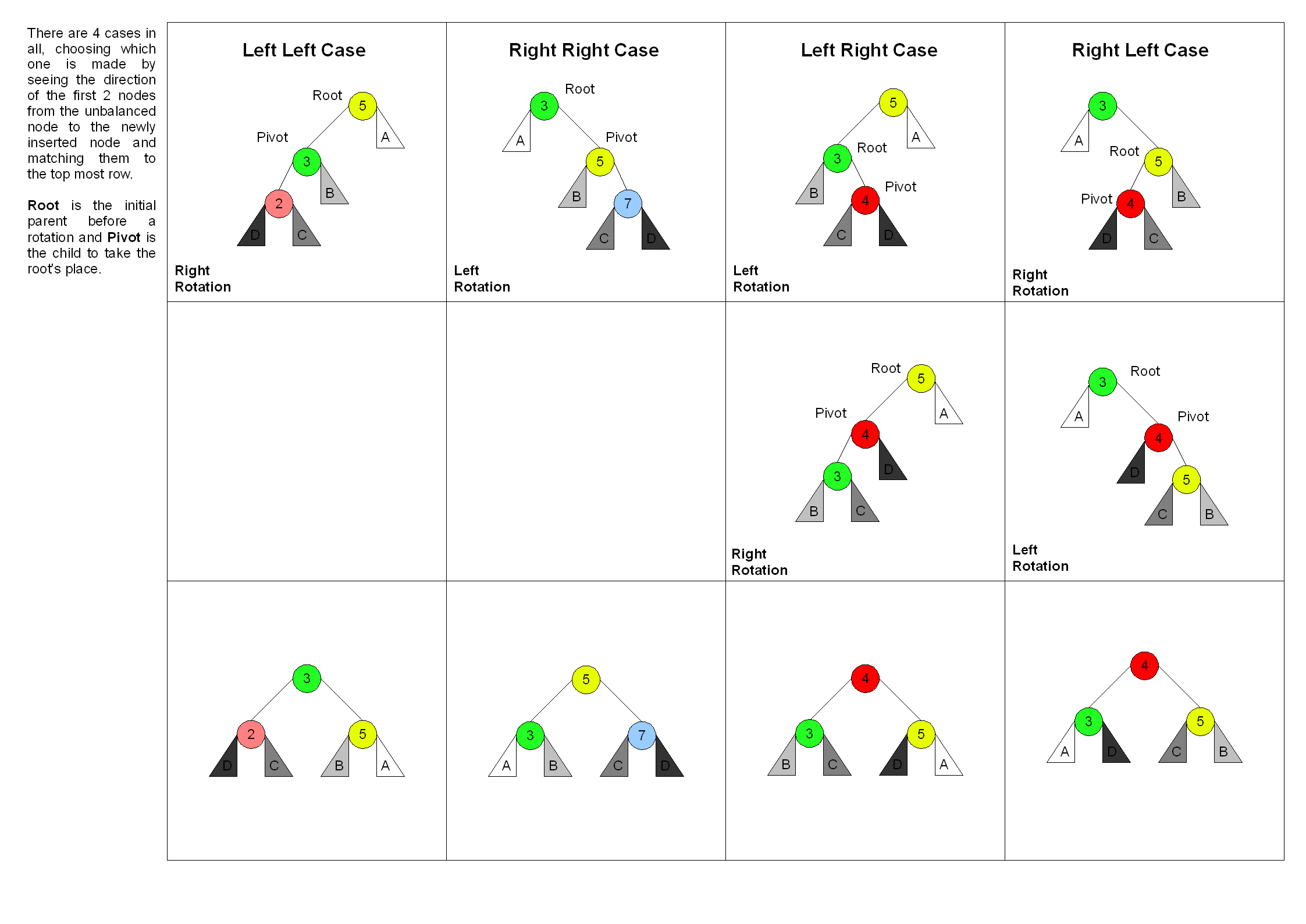树
二叉树
完全二叉树
用数组存储
常见平衡二叉树
二三树
AVL
红黑树
B 树
B+
⭐️slpay 伸展树
⭐️treap问题
树的面试题一般都是递归的,这是为什么?
可视化 DEMO
树和图的差别
看是否有环,有环为图
平衡树
https://en.wikipedia.org/wiki/Self-balancing_binary_search_tree
二叉搜索树 Binary Search Tree
二叉搜索树,也称为二叉搜索排序树、有序二叉树(Ordered Binary Tree)、排序二叉树(Sorted Binary Tree), 是指一棵空树 或者具有下列性质的二叉树:
- 左子树上
所有节点的值均小于它的根节点的值 - 右子树上
所有节点的值均大于它的根节点的值 - 依次类推:左、右子树也分别为二叉查找树(这就是 重复性!)
中序遍历:升序排列
二叉搜索树 查询操作时间复杂度 O(logn)
AVL 树
- 发明者 G. M. Adelson-Velsky 和 Evgenii Landis
- Balance Factor(平衡因子): 是它的左子树的高度减去它的右子树的高度(有时相反)。 balance factor = {-1, 0, 1}
- 通过旋转操作来进行平衡(四种)
- 平衡二叉树
AVL 树旋转操作
- 左旋
- 右旋
- 左右旋
- 右左旋
https://en.wikipedia.org/wiki/Tree_rotation#/media/File:Tree_Rebalancing.gif

AVL 总结
- 平衡二叉搜索树
- 每个结点存 balance factor = {-1, 0, 1} 3. 四种旋转操作
不足:结点需要存储额外信息、且调整次数频繁
红黑树
Red-black Tree
红黑树是一种 近似平衡 的二叉搜索树(Binary Search Tree),它能够确保任何一个结点的左右子树的 高度差小于两倍。具体来说,红黑树是满足如下条件的二叉搜索树:
- 每个结点要么是红色,要么是黑色
- 根节点是黑色
- 每个叶节点(NIL节点,空节点)是黑色的
- 不能有相邻接的两个红色节点
- 从任一节点到其每个叶子的所有路径都包含相同数目的黑色节点
关键性质
从根到叶子的最长的可能路径不多于最短的可能路径的两倍长。
对比
AVL trees provide faster lookups than Red Black Trees because they are more strictly balanced.
Red Black Trees provide faster insertion and removal operations than AVL trees as fewer rotations are done due to relatively relaxed balancing.
AVL trees store balance factors or heights with each node, thus requires storage for an integer per node whereas Red Black Tree requires only 1 bit of information per node.
Red Black Trees are used in most of the language libraries like map, multimap, multisetin C++ whereas AVL trees are used in databases where faster retrievals are required.
示例代码
Python
class TreeNode:
def __init__(self, val):
self.val = val
self.left, self.right = None, None
C++
struct TreeNode {
int val;
TreeNode *left;
TreeNode *right;
TreeNode (int x): val(x), left(NULL), right(NULL) {}
}
Java
public int val;
public TreeNode left, right;
public TreeNode (int val) {
this.val = val;
this.left = null;
this.right = null
}
二叉树的遍历
1.前序(Pre-order): 根-左-右 2.中序(In-order): 左-根-右 3.后序(Post-order): 左-右-根
遍历示例代码
def preorder(self, root):
if root:
self.traverse_path.append(root.val)
self.preorder(root.left)
self.preOrder(root.right)
def inorder(self, root):
if root:
self.inorder(root.left)
self.traverse_path.append(root.val)
self.inorder(root.right)
def postorder(self, root):
if root:
self.postorder(root.left)
self.postorder(root.right)
self.traverse_path(root.val)